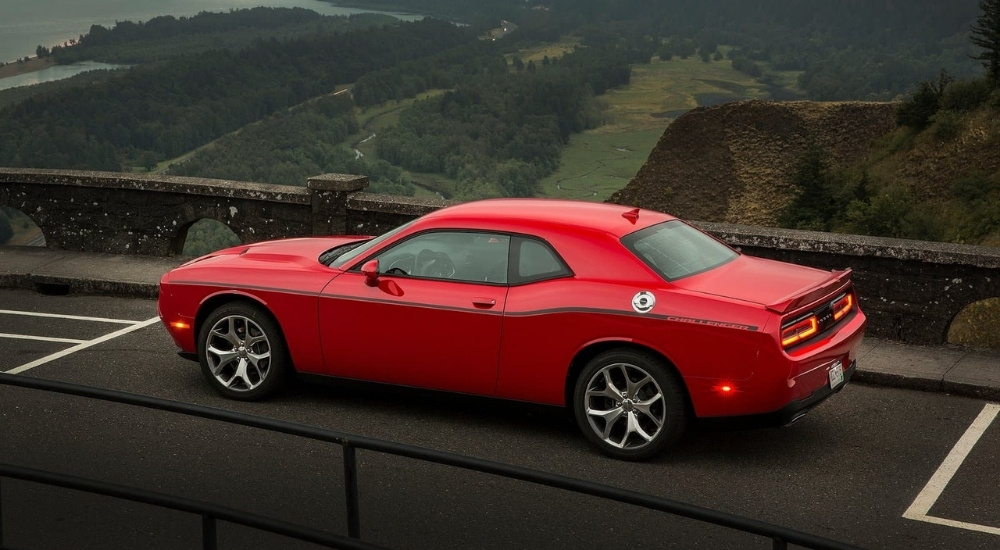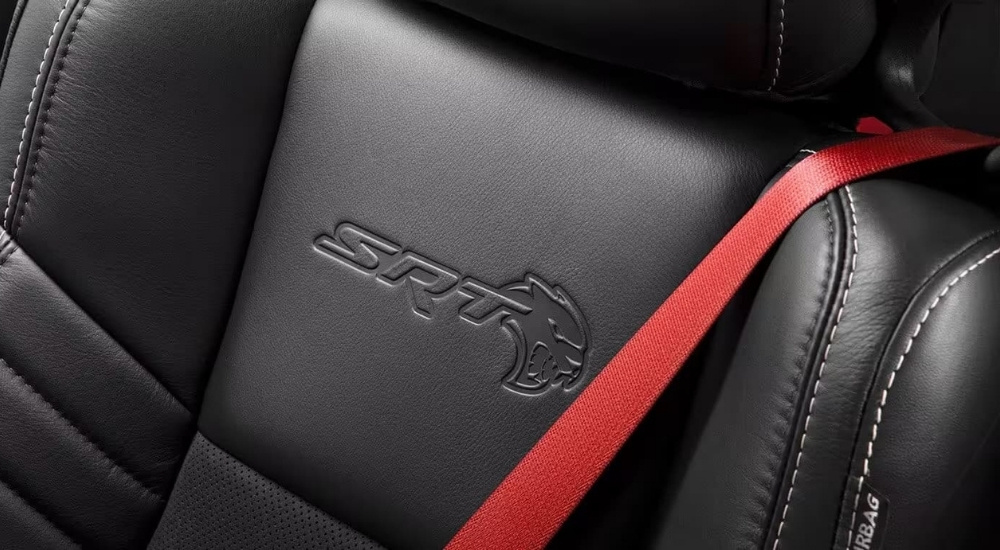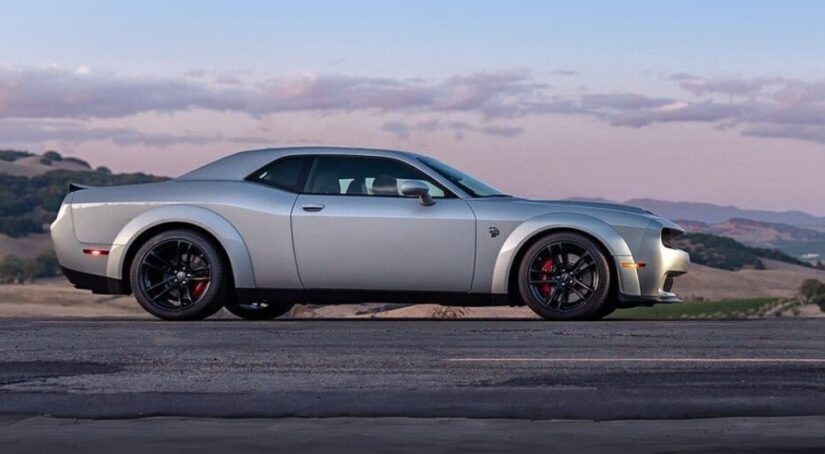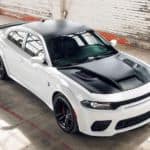Not everyone shopping for a fun car is willing to sacrifice comfort or pay an arm and a leg in order to get the best performance possible. If you’re looking for something cool and powerful that’s also practical enough to function as a daily driver, you’re not alone, and there are options out there for you. Today, we’re going to take a look at one such option, so if you see a used Dodge Challenger for sale, you’ll know everything you need to know to decide whether it’s right for you.
From the time it first debuted back in 1970, the Challenger has always been large for a pony car. After decades of being out of production, the model returned for the 2008 model year, taking the concept even further by offering a cabin large enough to seat five comfortably, which is normal for a passenger car but quite unusual for a two-door sports coupe. This generation ran from that 2008 debut up until the 2023 model year and offered a range of variants over that time. If you’re interested in a used model, here are a few things worth looking out for as you search.
Pentastar V6 Engine
Since the Challenger’s return, it has been offered with a variety of powertrains, most of which give you a V8 engine that produces plenty of horsepower and the classic rumble you’d expect from a muscle car. However, if you’re looking for a model that’s more practical, you might want to consider the comparatively humble (though still mighty) Pentastar V6 engine. For one thing, it’s the entry-level powertrain, meaning it’s the least expensive option in the lineup. That can either help you keep some extra money in your pocket or allow you to upgrade to either a newer model year or a higher trim level, like the GT instead of the SXT (this adds unique styling touches and more features).
The V6 can also continue to save you money even after you’ve purchased your car. That’s because it has the best fuel economy out of all of the engines. The Pentastar engine delivers 23 MPG combined fuel economy (and 30 MPG on the highway), something that can’t be said for any of the Challenger’s V8 options. On top of that, the throaty roar of a powerful engine isn’t a benefit for everyone—if you live in a quiet neighborhood, then you might want to avoid it instead. Stick with the 2011 model year or newer models with the Pentastar, and you’ll get all that plus over 300 hp.
Of course, the V8 engines do provide more power and can improve your time behind the wheel. You also need to get a V8 engine in order to get the six-speed manual transmission instead of the eight-speed automatic (though the automatic is also available with the lineup of V8 options). If you do want a V8, just keep this in mind: more power generally means more noise and less fuel economy. Choose the rung on the ladder that best matches your budget and your priorities, whether you want the 5.7L, the 6.4L, or the supercharged Hellcat.

All-Wheel Drive
Another thing that differentiates the Challenger from other models in its segment is the fact that 2017-2023 models offer all-wheel drive as an available option. This makes it easier and safer to drive on wet roads or on loose surfaces like gravel driveways. All-wheel drive can only be paired with the V6 engine, which is another reason to pick the Pentastar. However, it does bring fuel economy down from 23 MPG to 21 MPG combined, which is worth keeping in mind. But, depending on your driving habits, that slight difference could well be worth it for the extra traction.
Safety
Since safety features get better over time, it’s important to know what features appeared during which model years when shopping for a used car. If we were to cover every feature and when it became standard or available on each trim, we would be here all day—that’s why you should always check the details of the particular models you’re looking at while you browse and make note of them. However, we can give you some highlights so you can narrow your search down.
The Challenger has offered some smart safety features for the entirety of its twenty-first-century run, like stability control and traction control, which are important to have on a powerful car of this size. For the 2015 model year, new packages allowed drivers to get a much wider array of safety tech, including forward collision warning, adaptive cruise control, backup sensors, blind-spot monitoring, and rear cross-traffic alert. Together, these features can help you stay aware of your surroundings and avoid accidents. However, they never became standard during this generation of the Challenger, so you’ll need to keep an eye out if you want to make sure you get them.

Infotainment
If you’re looking for anything resembling a modern infotainment system, you’ll need to stick to the 2015 model year and newer. That’s the year when a Uconnect infotainment system with a five-inch touchscreen, Bluetooth connectivity, and a USB port became standard fare across the lineup. A larger 8.4-inch touchscreen was an optional upgrade, so you might be able to find it in models as old as the 2015 model year if you keep your eyes peeled. The Uconnect system was upgraded to a new generation for the 2017 model year, so that’s the year to look out for if you want Apple CarPlay or Android Auto.
Special Editions & Style
No matter which model year or trim level you choose, your Challenger will have retro styling that captures the feel of the first generation. But if you want some extra-special touches, there are a few things worth looking out for. For example, the heritage color Plum Crazy returned to the model for the 2016 model year, giving drivers the option to have a purple car that really stands out from the crowd. For the 2020 model year, Dodge celebrated the Challenger’s 50th anniversary with a special edition that has exclusive badges, a deluxe interior, and a unique exterior look with hand-painted black body panels. For the 2023 model year, the Challenger ended its third generation with several “Last Call” editions featuring cool looks and commemorative plaques.
Find the Challenger of Your Dreams
Unless you’re a hard-core Dodge enthusiast, you probably aren’t going to do enough research to learn everything you can about every single variant of the Challenger, and that’s okay. The most important thing to know is your own set of priorities. Before you start browsing at your local dealership, put together a list of features you want and features you have to have. If you go shopping in person, you can ask the sales team if they have anything in stock that fits your needs. If you’re shopping online, you’ll probably be able to use filters to narrow the inventory down to just models that have what you’re looking for.
Hopefully, the above guide gives you some idea of what features the Challenger has to offer and which model years you should focus on if you want to get those features for yourself. Between that information and knowing your own driving needs, you already have what you need to get started. One final tip—take your time. When looking for a particular used model, you might not find exactly what you’re looking for right away. But used inventory is always in flux, so you can keep checking back in until something fits the bill. Many dealers will even keep an eye out on your behalf if you tell them what you’re looking for, making it even easier to snag the Challenger of your dreams.



